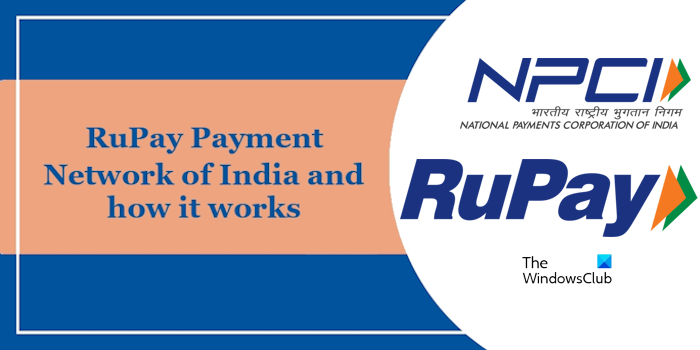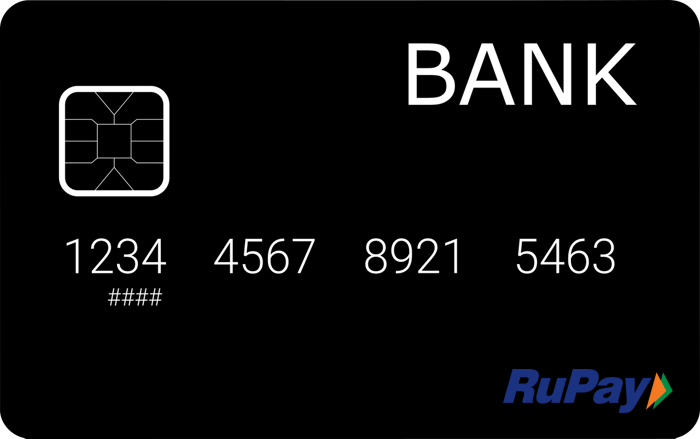In this article, we will talk about the RuPay payment network of India and see how it works. Since its launch, RuPay has emerged as the largest shareholder in the Debit Card Market. Today, the dominance of RuPay in India’s Debit Card market has challenged the international players, VISA and MasterCard.

What is the RuPay payment network in India?
RuPay is the product of NPCI (National Payments Corporation of India). It is an indigenous payment network in India. It is the initiative of the Government of India for card payments. The word RuPay is derived from the two words, Rupee (the currency of India) and Payment.

RuPay is the first of its kind Global Card Payment Network of India that is widely accepted at POS devices and many popular online shopping websites across India. It is also widely accepted at almost all ATMs in India. In addition to its wide acceptance for transactions, it is a highly secure network.
Apart from the secure payment network of India, RuPay is also an answer to international payment networks and expresses the pride of every Indian citizen over their nationality.
The Journey of RuPay
RuPay was launched in March 2012 and dedicated to the nation by the President of India in May 2014. At that time, the President of India was Shri Pranab Mukherjee. Have a look at the timeline showing the journey of RuPay.

- March 2012: RuPay was launched in India.
- June 2013: RuPay Pay Secure went live in India.
- May 2014: RuPay was dedicated to the nation by the President of India at that time, Shri Pranab Mukherjee.
- July 2014: The Government of India launched the Platinum card variant of RuPay. In addition to this, RuPay also introduced the Prepaid Hosted Solution Model to banks for Prepaid Cards.
- September 2014: The Government of India introduced the PMJDY card variant for RuPay Debit Cards.
- June 2016: The Government of India introduced the RuPay Virtual Card that can be used for contactless transactions.
- June 2017: In June 2017, the Government of India launched the RuPay Credit Card.
- July 2018: In July 2018, more than 260 Million transactions were recorded in one month by using RuPay cards.
- March 2019: In March 2019, the Government of India launched the One Nation One Card scheme on the RuPay platform.
- September 2019: The RuPay Select Card was launched in Dubai.
- January 2020: More than 362 Million transactions were recorded in one month by using RuPay cards.
In July 2019, the Government of India launched the RuPay JCB Global Card in association with JCB International Co. Ltd. This is the first ever JCB brand card issued in India. Currently, all three variants of RuPay cards, namely, Classic, Platinum, and Select are available under RuPay Global and are accepted at over 42.4 million POS locations and over 1.90 million ATM locations in 200+ countries and territories worldwide.
How does the RuPay Payment Network work?
RuPay Payment Network is a mediator between the customer and the merchant. When a customer makes a payment by using the RuPay Card, the request is sent to the customer’s bank by the seller’s or merchant’s Point Of Scale (POS) system through the RuPay network. If there are sufficient funds in the customer’s bank account and the customer has entered the correct PIN of the card, the customer’s bank authorizes the payment and credits the payment to the seller’s bank account through the RuPay network.
Read: How to use BHIM app for payment?
What is a RuPay Credit or Debit Card?

Both RuPay Credit and Debit Cards are variants of RuPay Cards. Currently, RuPay cards are issued by more than 1100 banks in India, including Private Sector Banks, Public Sector Banks, and Regional Rural and Co-Operative Banks. Apart from that, some of the core promoter banks of RuPay cards are the State Bank of India, Bank of Baroda, Bank of India, Union Bank of India, Canara Bank, Punjab National Bank, etc.
How to get a RuPay card?
If you open an account in a Public Sector Bank, like State Bank of India, Bank of Baroda, Indian Bank, etc., the Debit Card that you will get from the card from these banks is the RuPay Debit Card. However, you can also apply for a Rupay Debit Card on your bank’s official website or from the official banking app.

Today, almost all banks issue RuPay Debit Cards. You need to visit the official website of your bank and read the eligibility criteria there. Some banks issue RuPay Debit Cards for Savings Accounts, whereas some banks issue RuPay Debit Cards for all types of accounts, including Salary Accounts, Savings Accounts, and Current Accounts.
Similarly, you can apply for a RuPay Credit Card through your bank’s official app or by visiting your bank’s official website. The eligibility criteria to get a RuPay Credit Card may or may not be the same as for a RuPay Debit Card. Hence, read the eligibility criteria on your bank’s official website before applying for the RuPay Credit Card.
You can also contact the customer care center of your bank or visit the branch of your bank nearest to your home to get detailed information about the RuPay Debit and Credit cards.
Is RuPay Card free?
When you apply for a RuPay Debit card in your bank, the bank does not charge any fee while issuing the RuPay Debit Card. However, it also depends on your bank whether it charges any issuing fee or not. Customers may also have to pay an annual fee for their RuPay Debit Card. This amount is deducted automatically from their bank accounts.
Similarly, different banks charge different joining fees for RuPay Credit Cards. Whereas, there is no joining fee for RuPay Credit Cards for some issuing banks. Hence, if you want to apply for a RuPay Credit card, it is important to read all the terms and conditions before applying.
Which banks provide RuPay cards?
RuPay Debit Cards are provided by all Public Sector Banks. But, if your account is in a Private Sector Bank, you may or may not get a RuPay Debit Card. However, you can apply for the RuPay Debit Card on the bank’s official website or through the official app of your bank, provided your bank issues the RuPay Debit Card.

Currently, all banks do not provide RuPay Credit Cards. You can view the information about which banks issue RuPay Credit Cards on the official website of RuPay.
Who is eligible for RuPay cards?
All the citizens of India are eligible to apply for RuPay Debit Cards. RuPay Junio is a digital RuPay Prepaid Card that is specifically designed for kids, teenagers, and young adults. It is available as an app and can be downloaded from Google Play Store.

The eligibility criteria for Ruay Credit Cards is different from that of the RuPay Debit Cards. You need to contact the issuing bank to know the detailed eligibility criteria for the RuPay Credit Card.
What is the difference between UPI and RuPay?
UPI or Unified Payment Interface is a payment mechanism in India that allows users to transfer money from one bank account to another bank account without any hassle. UPI works through a UPI-enabled app. On the other hand, RuPay is a payment network in India that manages payments through the RuPay Debit or Credit Cards.
Read: What is UPI ID and how does it work?
What is the payment method of RuPay?
The payment method of RuPay is RuPay cards. You can apply for a RuPay Credit or Debit Card on your bank’s website or through the official app of your bank. RuPay cards are widely accepted on many popular shopping websites in India and at almost all bank’s ATMs.
Leave a Reply